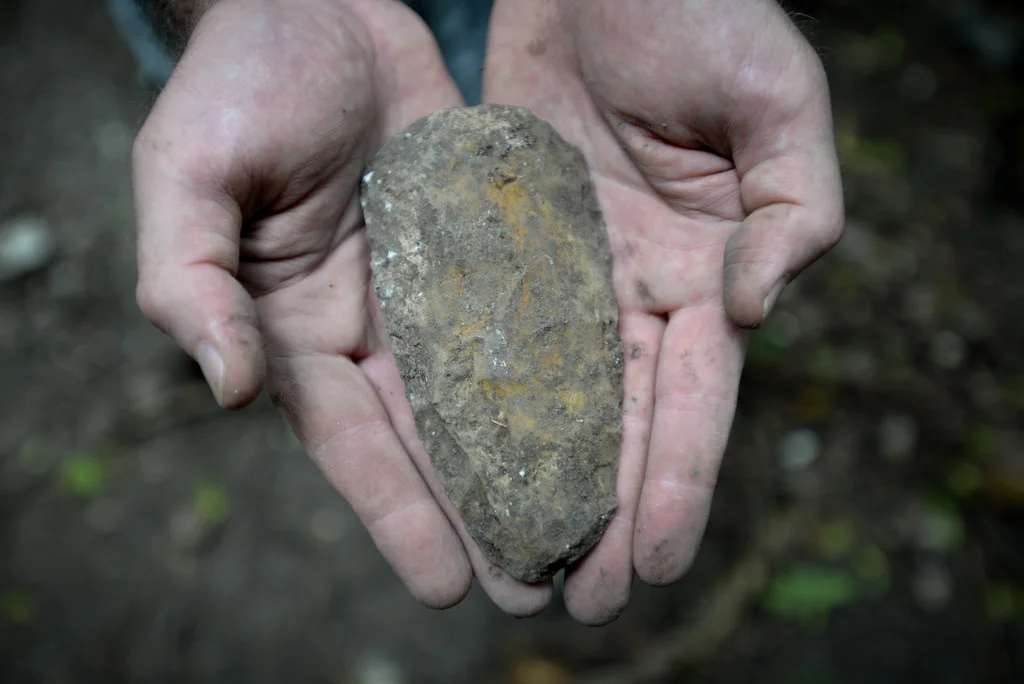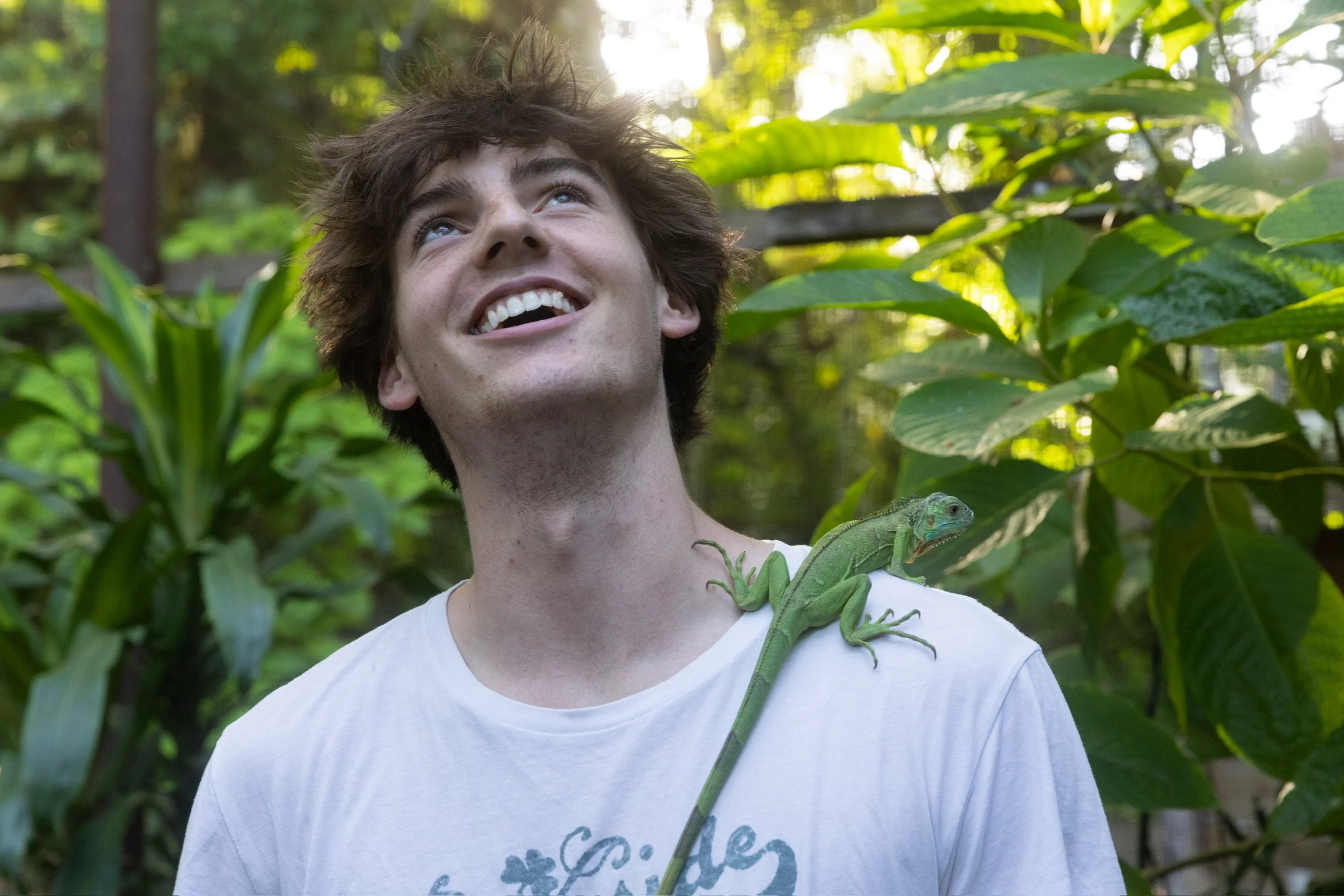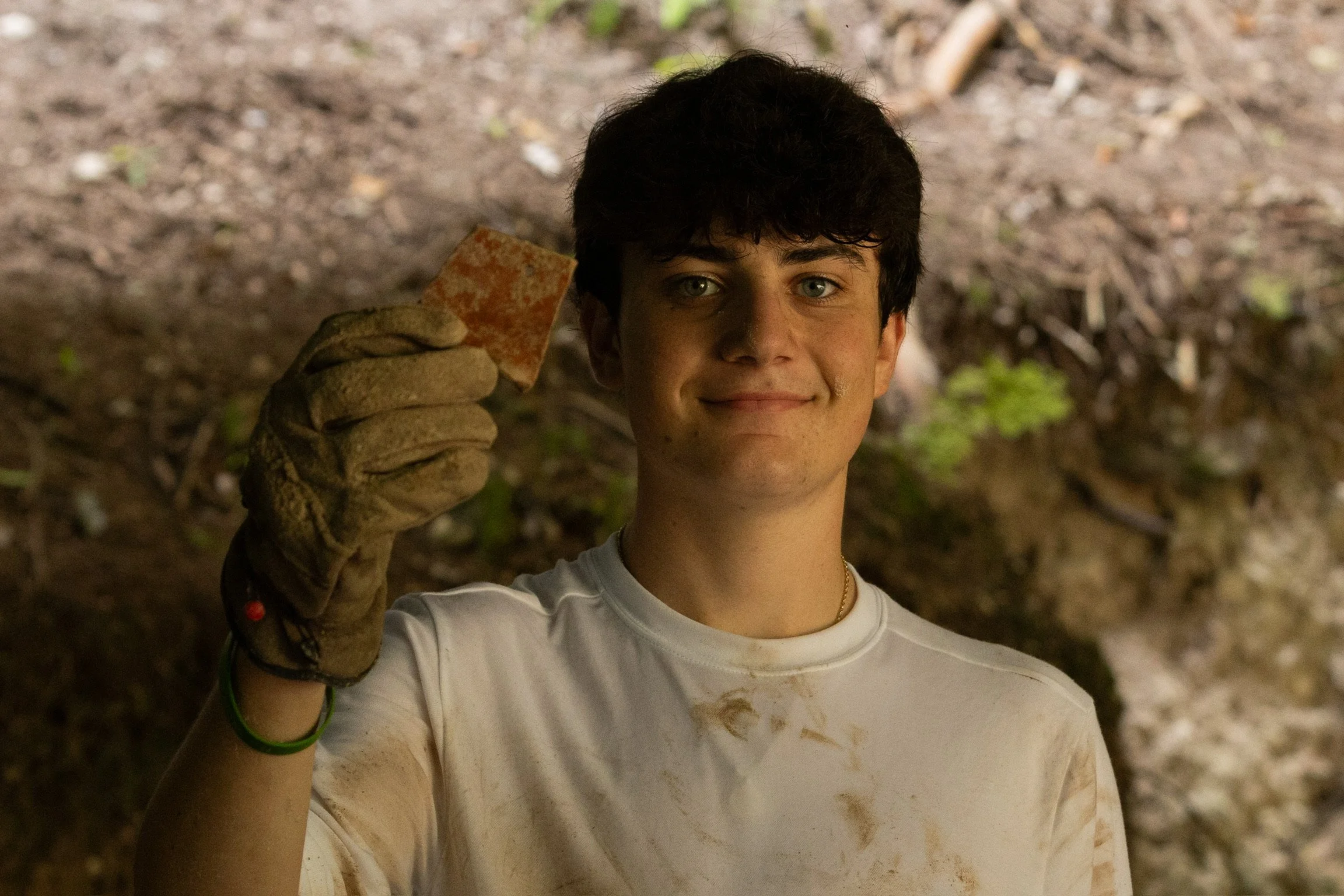
Project Overview
Next summer will mark the eighteenth season that AFAR will teamed up with the highly respected Belize Valley Archaeological Reconnaissance project to work at the ancient Maya site of Cahal Pech. This two-week archaeological field school will allow students to obtain hands-on training from leading archaeologists while excavating in a very special space once occupied by the citizens of ancient Cahal Pech.
Over the course of the field school, students will take part in virtually every step of the archaeological field process and will work to master steps such as excavation, mapping, illustration, artifact processing, and scientific journaling.
History
Cahal Pech is located on the southern outskirts of San Ignacio Town, in the upper Belize Valley region of western Belize. The site core sits on the crest of a steep hill on the west bank of the Macal River, two kilometers upstream from the latter’s confluence with the Mopan, and some 200 river kilometers from the Caribbean coast. The central acropolis is approximately 270 meters above sea level and provides a commanding view of the Maya Mountains to the south, and the interfluvial bottomlands between the Macal and Mopan Rivers to the north (Awe 1992).
Settlement survey and investigations at Cahal Pech indicate that during the Classic period the site and its sustaining area may have encompassed a realm of approximately 16 square kilometers. At the nucleus of this territory was the central precinct or site core. This area consists of some 34 large structures which are densely compacted on an imposing acropolis slightly larger than one hectare in size. The architecture of the central precinct includes several tall non-domestic structures, a number of large range-type buildings, two ballcourts, and possibly a sweathouse (Awe and Campbell 1988, 1989).
Most of the structures in the site core are located around seven plazas. The largest of these is Plaza B, or what Satterthwaite (1951:22) previously referred to as the Central Plaza. The principal Classic period courtyard, however, is Plaza A. Together with Plazas D and E, it is located on the western half of the acropolis. All of the structures bordering Plazas A, D and E are tightly clustered, they completely enclose their courtyards, and they provide limited access to and from the other plazas within the central precinct. The other courtyards (Plazas B,C,F, and G) are relatively more open and mounds are less clustered, but the structures are located in a position that would have provided limited access to the site core in general.
There are, in fact, only two areas which provide access into the site core. These are located to the north and south of the juncture between Plazas B and C. This configuration, plus the acropoline nature of the central precinct, suggests that during the Classic period the site core may have served for defense in times of conflict, or for limiting public access into areas that had been exclusively set aside by and for the elite (Awe, Campbell and Conlon 1991).
Archaeological Focus
The 2026 investigations at Cahal Pech aim to further elucidate the status and complexity of this important center, from its establishment at the end of the Early Preclassic period (1200-900 B.C.) to its subsequent abandonment in the Terminal Classic period (~AD 800-900). Specifically, we will continue exposing the terminal architecture of the site core’s western ball court and investigate the liminal space between the western ball court and the A Plaza, considered to be the elite palace section of the site core. Our goal is to define the architectural connections of these two sections to better understand the spacial definition of these areas to see to what degree access and traffic to the site core from the western ball court area was restricted.
Registration
Application & Reservation
To reserve a space, students must submit an application and be accepted. Upon acceptance into the program, one half of the program fees will be required to be paid. The remainder of the fees will be due by March 1, 2026.
Applications will be accepted until all spaces are filled. Participants will be notified of their acceptance within two weeks of the submission of their application and will receive an information packet shortly thereafter with further details.
Cancellation and Refund Policy
Before January 1: All payments are refundable.
After May 1: All payments are non-refundable unless your application is rejected by the program director.
Right of Refusal
AFAR reserves the right to refuse an applicant’s selection. This is a rare occurrence and is most likely due to a person’s inability to meet health requirements or in the interest of group compatibility. Once in the field, the program directors and AFAR reserve the right to send a student away from the program should that person’s behavior compromise the safety, research objectives and general performance of the group, or violate Belize laws, regulations or customs.
Expectations of Students
Working on an archaeological site is hard work. Students need to be in good health and capable of using picks, shovels, trowels, and detailed instruments to excavate in a hot environment. Students are expected to conduct themselves in a professional manner, be eager to learn, and capable of taking direction.
Itinerary
Program Itinerary
Day 1 — Fly to Belize City and drive to San Ignacio, stopping to eat on the way. Check into resort and brief on safety and logistics. Evening lecture on The Belize Maya and Research History of Cahal Pech.
Day 2 — Site visit to Xunantunich.
Day 3 — Cahal Pech site tour in the morning. Equipment check. Onsite Stratigraphy and Artifact Collection Workshop. Lab introduction & unit setup. Archaeological Recording Workshop before dinner.
Day 4 — Second day of excavations. Workshop on The Maya Ballgame before dinner.
Day 5 — Third day of excavations. Maya Chocolate workshop and evening dinner in San Ignacio town. No evening lecture or workshop.
Day 6 — Fourth day of excavations. Maya Cave lecture before dinner.
Day 7 — Fifth day of excavations. No evening lecture or workshop.
Day 8 — Students will spend a special day and overnight at Jade Jungle Resort.
Day 9 — Students will explore Actun Tunichil Muknal cave during the day. Lunch will be provided on the excursion. Team will return in time for dinner at the resort. Lecture following dinner.
Day 10 — Sixth day of excavations. Workshop after dinner.
Day 11 — Seventh day of excavations. Myths and Legends of Belize presentation before dinner.
Day 12 — Eighth day of excavations. Visit to the Iguana Sanctuary and dinner in town. No evening lecture or workshop.
Day 13 — Ninth day of excavations. Following excavations, the team will break down site, process and store final artifacts, finish mapping, and do inventory on equipment.
Day 14 — Team will spend the day on the deep lake aboard the jungle pontoon.
Day 15 — Team will travel home.
Daily Work Schedule
7:00-7:30 — Breakfast buffet served
7:30 — Students depart for Cahal Pech site and pickup equipment along the way
7:45-12:00 — Fieldwork begins
12:00-12:30 — Lunch Break
12:30-2:30 — Fieldwork continues
2:30 — Complete daily documentation, gather artifacts & equipment and depart site.
3:00-6:30 — Afternoon Programming (varies)
6:30 — Dinner with free time afterwards
10:00 — Bedtime
Accommodations & Meals
The group will be staying the Cahal Pech Village Resort in San Ignacio. Students will be sharing rooms, each with en- suite bathrooms and air conditioning. The resort has a laundry service, which costs $13 per load. The turn around for laundry is 24 hours. Towels are provided. The hotel includes a general room with a television and a dining area where meals will be served. Wifi is also available.
Breakfast and dinner will typically be eaten at the hotel, and lunch will be provided onsite on weekdays. We travel into town on Wednesday evenings to dine at local restaurants. Lunches are provided at the site on all excursions. All of the meals served will be comparable to those found at home. Please let us know if you require a special diet so that we may discuss the best way to accommodate your needs.
For this program, the students will generally be at the archaeological site during the weekdays and on excursions during the weekend. On occasion, we may choose to deviate from the schedule in reaction to unforeseen circumstances and unique opportunities.
Workshops & Excursions
An archaeologist’s work is not finished unless he or she can sit back and reflect on the day’s excavation. Therefore, the group will make time to experience Belize away from the shovels and wheelbarrows, either by relaxing at a café or by visiting several nearby Maya sites.
Classroom Sessions
Classroom sessions will take place during select times throughout the session. Topics will include the following:
The Belize Maya
The Research History of Cahal Pech
Stratigraphy and Artifact Collection
Archaeological Recording
The Maya Ballgame
Lamanai Site Profile
Maya Caves
Historical Excursions
We believe that visiting the region’s historical sites is essential to understanding the context of the archaeological work at Cahal Pech. Excursions may change depending on the excavation schedule and unforeseen events, and may include the following:
Jade Jungle Resort
Barton Creek Cave
Actun Tunichil Muknal Cave
Iguana Farm
Maya Chocolate Workshop
Xunantunich
Jungle Cruise




















Belize Team Leaders
In addition to the supervisors that will oversee the excavations, there will be numerous staff members supporting the archaeological team.






